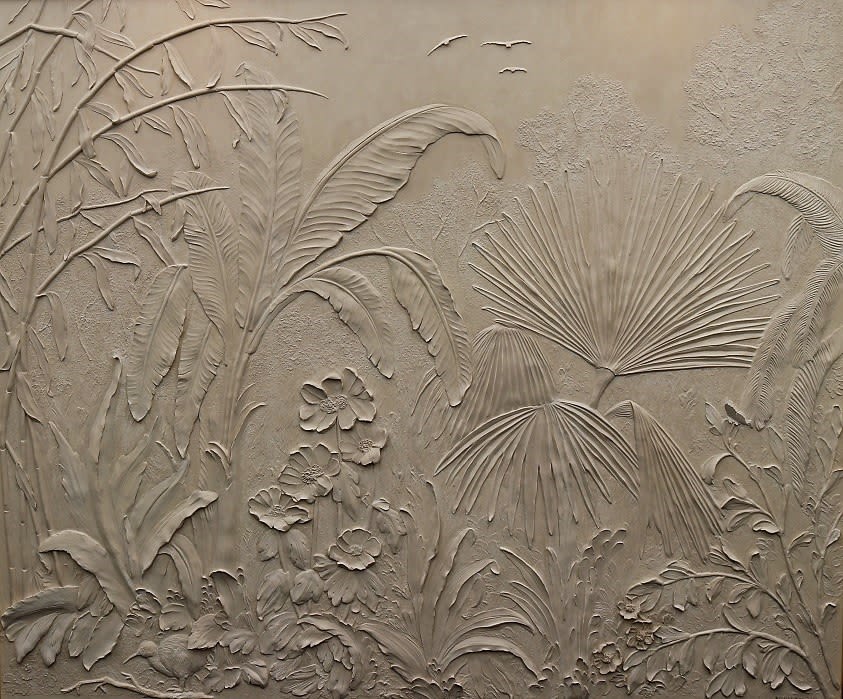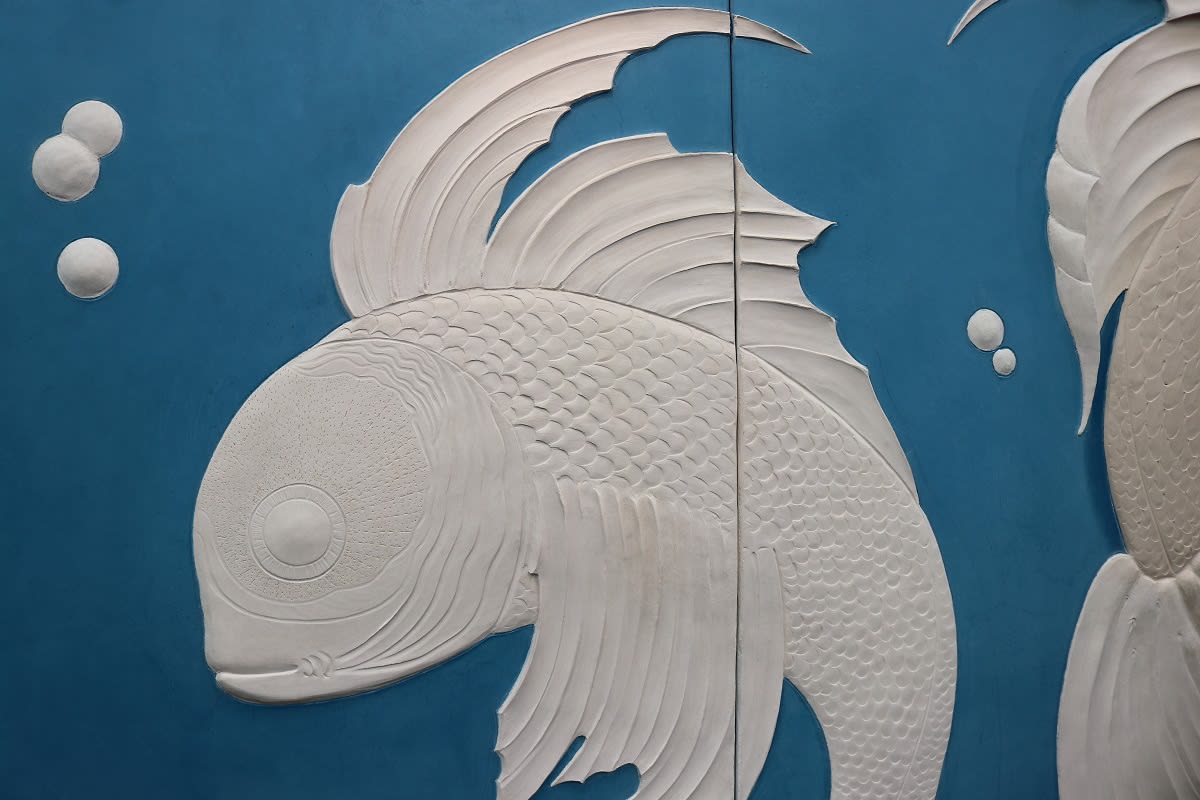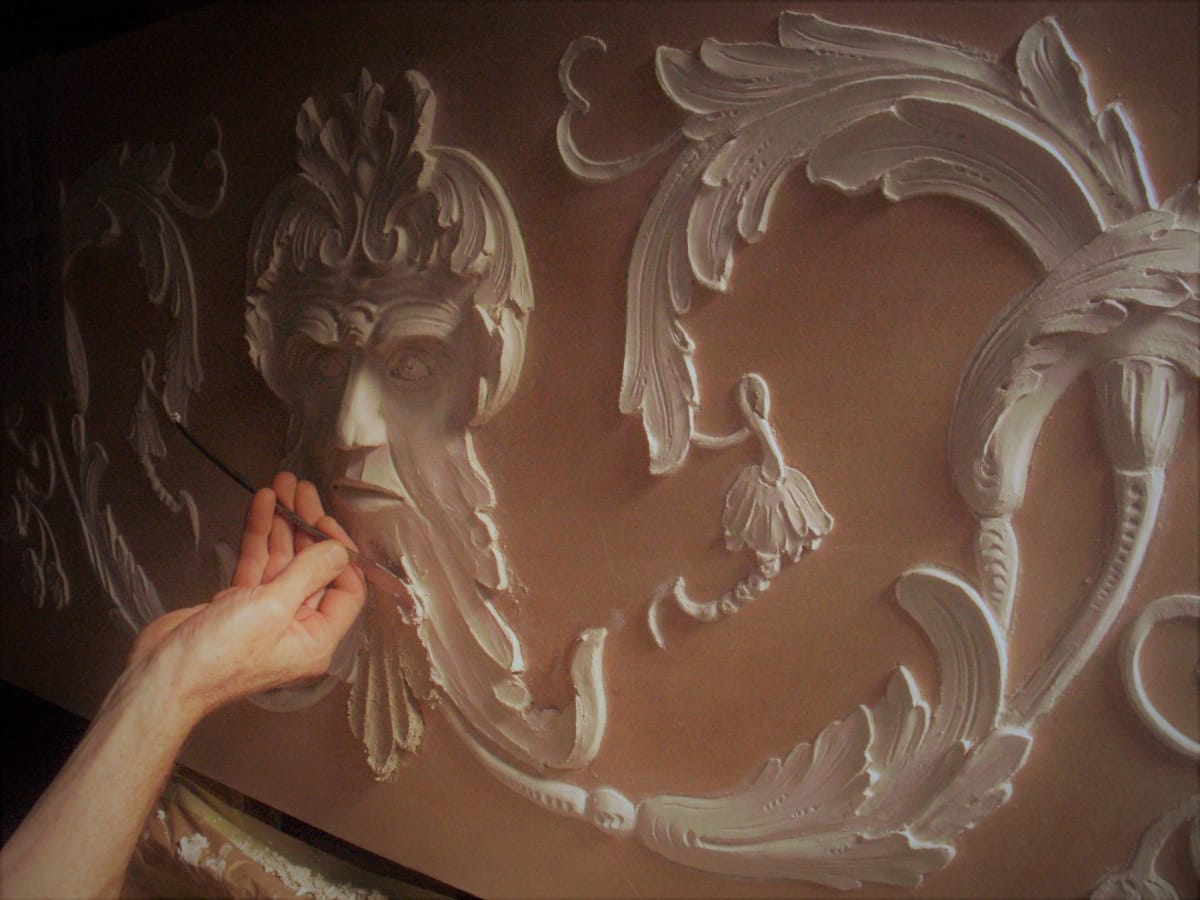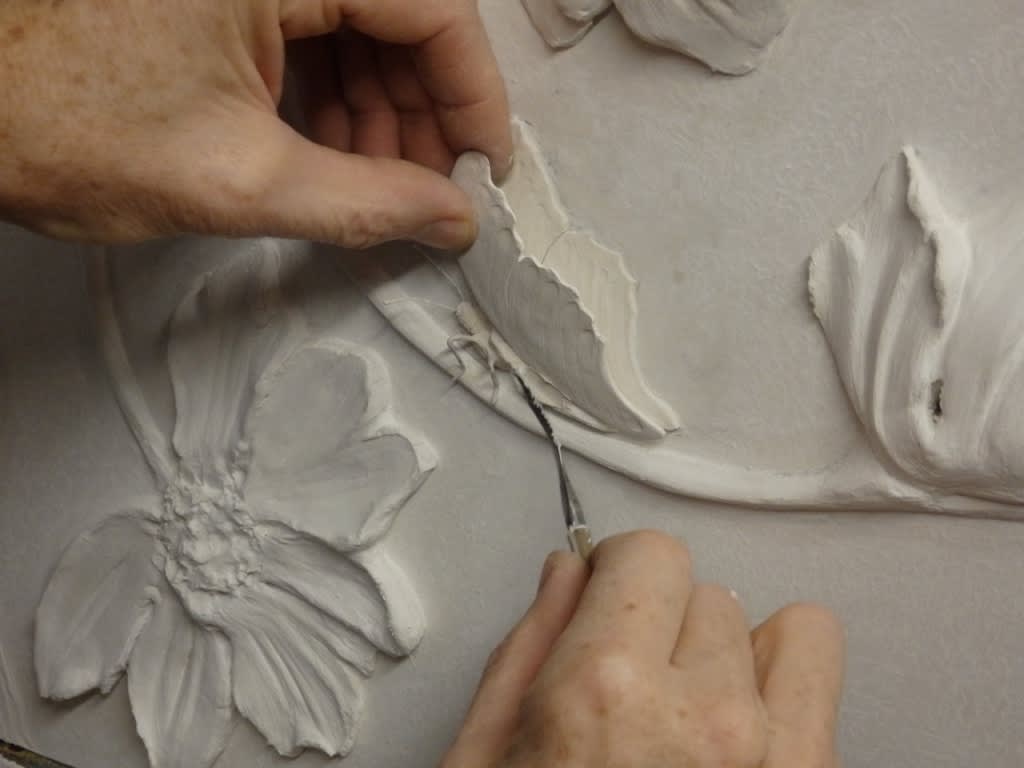Bas-Relief Sculpture: What is it and how can it be used in modern-day interior design?

As decorative artists here at Pigmentti, we use a number of skills to reinstate high-quality craftsmanship and decoration in modern-day interior design. One of these techniques is bas-relief sculpture; a craft we presented at Decorex in September 2018 using Marmorino, a natural material that requires this skill to sculpt out the finer details. Interest spiked in this unusual technique, so naturally, we wanted to unearth the facts about this highly desirable effect and explain why we think it’s important to use in interior design today.


What is bas-relief?
Pronounced bah-relief, the term originally stems from the Italian phrase basso-relievo which directly translates to low relief. Artists create a bas-relief by sculpting onto a 2D plane to create and accentuate figures and objects, producing a 3D appearance which can be viewed from all angles with little distortion. Alternatively, material can also be carved from a 2D plane, a technique called Graffito. The prominent figures that have been carved into or added to the surface remain fairly shallow. If the subject appears to be more than halfway raised from its background, this is classed as high relief.

A brief history
Some of the earliest known bas-reliefs have been found on the walls of caves and are otherwise known as Petroglyphs. These works are some of the first known artistic creations of man and were also treated with colours to further accentuate the relief. Stone buildings and pyramids created by the Egyptians and Assyrians were next to adopt this style of work and bas-relief sculptures were heavily dominant in Greek and Roman buildings such as the Parthenon frieze which adorns the upper part of the Parthenon’s naos and features relief sculptures of Poseidon, Apollo, and Artemis.
The popularity of bas-relief continued into the Medieval times (5th to the 15th century) where the technique became popular in churches, especially Romanesque places of worship where it was used to celebrate the lives of important religious events and figures. This was one of the first moves in to Western culture and allowed bas-relief to flourish before becoming a staple in luxury design. The Renaissance period (14th to the 17th century) saw artists such as Donatello combining it with high-relief to create perspective and during the 19th century, bas-relief sculpture was used to elevate historic monuments such as the sculpture on the Parisian Arc de Triomphe.


Bas-relief in the modern age
Today, bas-relief is used for mostly smaller works and is, as Donatello initiated, largely combined with high-relief to gain a sense of perspective and to give depth to a piece. In luxury interior design specifically, bas-relief can be used to create focal points within a room, as well as enhancing walls, ceilings, domes, doorways, columns, water fountains and other indoor architectural features. No longer is this traditional technique contained to religious iconography and instead artists such as ourselves can create landscapes, architectural details or whimsical narratives within a section of bas-relief.
Impressionism and modernism are easily transferable to the detailed nature of bas-relief and this has allowed the skill to remain contemporary, or undergo an update dependent on the clients’ wishes. Art Deco, Art Nouveau and Arts & Crafts features are proving to be largely popular amongst design ideas in the current market.


How can interior designers incorporate bas-relief?
If you’re a luxury interior designer, this is a very unique and alternative finish to an interior that is sure to bring the wow-factor. The exquisite finish of this type of mastery is a talking point and it’s the perfect accompaniment to hand-turned wooden furniture and high-end marble pieces which have seen a resurgence in luxury decor over recent years.


The beauty of bas-relief is that you can use any medium, making the technique extremely versatile for interior design. Stone and metal are both popular materials but at Pigmentti we like to use materials in unexpected ways and traditionally opt for Marmorino which offers a range of finishes depending on brief, from matte, satin, and polished final effects.
Touch is a vital element in homes today and this is something that designers need to consider when bringing an essence of tactility to their designs. Consumers have a desire to enhance their sensory experience and adding an element of touch and visual complexity helps to appease that natural sense of curiosity. Bas-relief brings texture and depth to a room which provokes the need to explore. Clients to the luxury design world want a conversation starter and want to impress at their dinner parties and entertaining events. A bas-relief provides something completely unique, beautiful and an opportunity for education.


Based on the current market, a reawakening of artisanal decoration and high-quality craftsmanship is rife and consumers are now, more than ever, appreciating the skill involved in creating sculpture and opulent decoration. Bas-relief is the perfect focal point to an interior room or exterior of a building and Pigmentti can offer this unique finish while working with homeowners, interior designers and architects.

Contact us today for a consultation or for further information on how to incorporate bas-relief, natural pigments, frescos, murals, gold leaf and verre églomisé into your designs.
